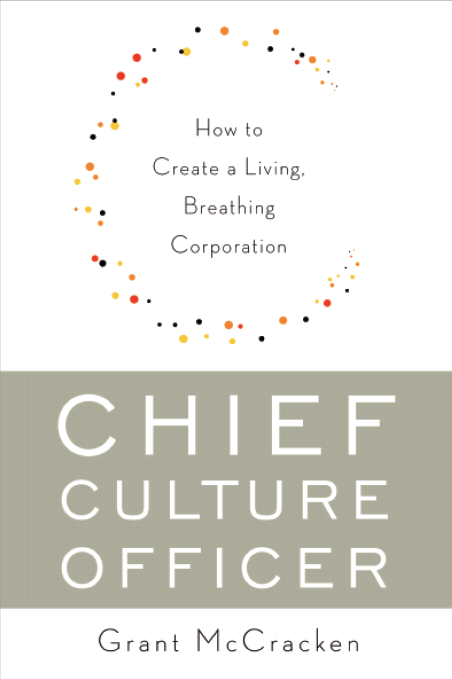
At their most powerful, brands actually make culture. Creator brands, let’s call them.
Nike changed the way we thought about exercise, fitness, bodies and diet in the 1970s and 80s. Most of us look different and feel different for the work that came from this brand and those brilliant meaning-makers at Wieden + Kennedy.
A cluster of brands and industries after World War II helped create “mid century modernism” which in turn shaped how Americans lived and thought of themselves in a very fluid moment. Brands were minting fundamental ideas of who were we were, what we cared about, and how we lived.
In the present day, Uber and AirBnb are changing the way we think about travel and tourism. Netflix is changing the way we think about TV and storytelling.
More often, of course, brands are fellow travelers. They identify what’s happening in the culture and put themselves “in tune” with it.
Subaru and the agency Carmichael Lynch are now brilliantly in tune with culture. They continue to speak to (and speak for) a new feeling for community and family. Now that competitive individualism is in retreat, this is the way Subaru made itself a “brand of the moment.” (This is exceptional work and I hope the brand and agency are being showered with awards. And enjoy them. Principal Financial Group and agency TBWA now threatens to do still better work.)
Sometimes the brand resonates with culture in a painful, unconvincing way, as when a big processed food companies struggles unconvincingly to show us how “artisanal” they are. No one’s buying it, figuratively or literally. The brands of the consumer packaged goods world are really under challenge at the moment. It’s sad because they were so perfectly in tune in the first few decades after World War II.
Getting in touch with culture is hard. Creating culture is harder still. It’s not for the faint of heart or mind. It takes intelligence, imagination, a virtuoso control of the organization, the message, and the moment.
The rewards, on the other hand, are immense. The brand that creates culture becomes a kind of navigational satellite in our world. It becomes one of the places from which we draw our ideas of selfhood and in the Herman Miller case, the work place. Most brands are “meanings made.” Creator brands are meaning makers. They help make the meanings that in turn make us.
With this in mind, I read with interest a wonderful essay in FastCo Design by Diana Budds about Herman Miller and its plan to change our culture. In the words of CEO Brian Walker, the firm has undertaken a
“shift from being just a contract company or just an industry brand to truly be a powerful lifestyle and consumer lifestyle brand.”
This is the language corporations use when it setting about to change culture. They talk about becoming a lifestyle brand. They are now embarked on styling life.
The trouble with this approach is that many people want to style life but they have no clue about what culture is or how to change it. And you can’t style life unless you are prepared to reckon with culture.
Too often, “lifestyle brand” means slapping a new coat of paint on the brand. Too often lifestyle branding is all “style “and no “life.” The brand remains an PET plastic soda bottle sitting on the surface of the Atlantic, incapable of any sort of real contact (thank goodness). It’s just another contribution to the detritus that flows from the land of bad marketing.

The good news is that Herman Miller hired a guy called Ben Watson (pictured here with his muse, a beautiful Burmese). Ben is a designer and, at their best, designers are good at helping connect the brand to culture. The best of them have an extraordinary combination of intelligence, imagination, strategy, craft, cunning. They grasp cultural foundations and the cultural moment. They can see culture in all it’s manifestations, intellectual, aesthetic, emotional, material and emergent, and they have a way make these manifest in the brand in a way that points us in new directions, in this case away from old concepts of work and work place to new concepts of work and work place. This makes them a precious, possibly irreplaceably precious, resource. This makes them seerers where the rest of us are blind.
But it doesn’t always go well. Sometimes designers just don’t get culture. Pepsi and Tropicana hired Peter Arnell to “rejuvenate, reengineer, rethink, reparticipate in popular culture,” and Arnell promptly engaged in what BusinessWeek called a “five week world tour of trend design houses.” (More details in Chief Culture Officer, pp. 161 and following).
This is a little like asking an astronomer to look for uncharted planets only to discover that he’s spend his time touring observatories chatting up other astronomers. Yes, of course, you can learn a lot this way, but at some point you have actually have to leave the design world bubble and talk to people who aren’t wearing really cool glasses. Anything else is threatens to deliver the provincial and parochial. Anything else is an echo chamber.
I don’t know Ben. Let me point out that there is no criticism implied or intended. For all I know, he is absolutely the most gifted “astronomer” in play and Herman Miller’s best chance to change culture. Fingers crossed! (I should say, in the interests of full disclosure, that I have done several projects for Herman Miller. For all I know Ben is drawing on my work. In which case, god speed!)
Ben has an extraordinary Nike-esque opportunity. We are in a moment of real cultural confusion. There are several big questions in play. What is “work?” What’s a “workplace?” These things used to be defined by several pretty clear distinctions: work and home, work and play, work and life, public and private, instrumental and expressive, pragmatic and recreational, men and women, hierarchical distinctions of rank, exquisitely clear divisions of labor. nice, neat boundaries of inside and outside, them and us. These cultural meridians once so helpful in defining social life are now well blurred. Blurred? They are thoroughly tangled.
Ben could bring clarity here. He could create a space that accommodates these confusions, that enables what we hope for, and helps to “edit out” what we wish to escape. Ben can made a contribution to Herman Miller and through Herman Miller to us. He can actually clarify our culture. He can humpty-dumpty us back together again. He can help make us ready for a postmodern existence.
What’s especially interesting about Budds’ essay is the attention it gives to the way Herman Miller intends to use retail and display spaces to define the brand and through the brand the rest of us. Designers control the manifestations of culture in the world. And when we give them Herman Miller spaces (and furniture) we give them something with which to work.
Will Ben transform us? Will Herman Miller become a creator brand? It depends to some extent on how well Ben and Herman Miller understand culture. And if manifestations are designers’ strength, culture is, by and large, their weakness.
Post script.
I think we are seeing public space and public events used more and more to stage the brand. Even as we avail ourselves of social media and digital content, we like to make the brand live in the “real world.” (Note to self…and anyone else who’s interested: we need a model that distinguishes all the media and messages at our disposal and shows how we can divide branding work across them.)
I was interested to see the work being done by a Canadian bank called Mojo. Here’s a photo of their interior. As a Canadian I can say with confidence that this is the first time any message even remotely like “IS U REALLY BOUT UR MONEY OR NAH” has even been by a Canadian bank.

Normally, Canadian banks prefer to look like this:

Which to be fair is it’s own very particular symbolic statement, and in its moment superbly in tune with Canadian culture.
Thanks to Gerald Forster for the photo of Ben Watson. Gerald is the founder of Here We Go Now.
For more on culture, try this.

Like this:
Like Loading...
 One of the things we are watching at Culturematic HQ is whether the artisanal theme is beginning to run out of steam.
One of the things we are watching at Culturematic HQ is whether the artisanal theme is beginning to run out of steam.








